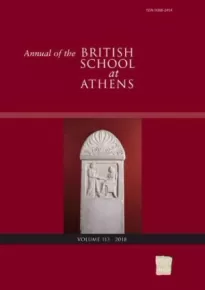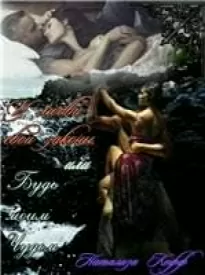Кубок Аркесилая в контексте: Греческое взаимодействие с погребальным искусством позднего периода

- Автор: Мэтью Скузе
- Жанр: История / Культурология
- Дата выхода: 2022
Читать книгу "Кубок Аркесилая в контексте: Греческое взаимодействие с погребальным искусством позднего периода"
Источники
Agut-Labordère, D. 2013. ‘The Saite Period: the emergence of a Mediterranean power’, in Moreno García, J.-C. (ed.),
d’Albert, H.T.P.J. 1833. ‘Arcesilas, roi de Cyrénaïque’,
Andreu-Lanoë, G. 2013.
Applebaum, S. 1979.
Aston, D.A. 2003. ‘The Theban West Bank from the Twenty-fifth Dynasty to the Ptolemaic Period’, in Strudwick, N. and Taylor, J. (eds),
Aubet, M.E. 1993.
Aufrère, S., Golvin, J.-C. and Goyon, J.-C. 1994.
Austin, M. 2008. ‘The Greeks in Libya’, in Tsetskhladzep, G. (ed.),
Backes, B. 2010. ‘Three funerary papyri from Thebes: new evidence on scribal and funerary practice in the Late Period’,
Bard, K.A. 2015.
Bárta, M., Coppens, F. and Krejčí, J. (eds) 2017.
Bassir, H. 2016. ‘Neshor at Elephantine in Late Saite Egypt’,
Bassir, H. and Sherbiny, H. 2014. ‘The representation of the Hedgehog Goddess Abaset at Bahariya Oasis’,
Beazley, J.D. 1942.
Beazley, J.D. 1956.
Beazley, J.D. 1963.
Benton, S.N. 1959. ‘Birds on the cup of Arkesilas’,
Bergeron, M. 2013–15. ‘Laconian vases’, in Villing, A., Bergeron, M., Bourogiannis, G., Johnston, A., Leclère, F., Masson, A. and Thomas, R.
Bianchi, R.S. 1990. ‘Egyptian metal statuary of the Third Intermediate Period (circa 1070–656 BC), from its Egyptian antecedents to its
Boardman, J. 1958. ‘A Greek vase from Egypt’,
Boardman, J. 1980.
Bonfante, L. 2003.
Bosticco, S. 1959.
Bothmer, D. von and Milne, M.J. 1947. ‘The Taleides Amphora’,
Bresson, A. 2000.
New Kingdom’, in Lloyd, A.B. (ed.),
Budge, E. 1904.
Buschor, E. 1921.
Camporeale, G. 2004. ‘The Etruscans in the Mediterranean’, in Camporeale, G. (ed.), tr. Hartmann, T.M.,
Cerchiai, L. 1995. ‘Il Programma Figurativo Dell’hydria Ricci’,
Chamoux, F. 1953.
Chamoux, F. 1966.
Coudin, F. 2009.
Currie, B. 2005.
Demetriou, D. 2012.
Denoyelle, M. 1994.
De Puma, R.D. 1986.
De Ridder, A. 1902.
Dindorf, W. 1824.
Dodson, A. 1988. ‘Some notes concerning the Royal Tombs at Tanis’,
Dodson, A. 2010. ‘Mortuary architecture and decorative systems’, in Lloyd, A.B. (ed.),
El-Sadeek, W. 1984.
Evans, J.A.S. 2013. ‘Oral tradition in Herodotus’, in Munson, R.V. (ed.),
Fakhry, A. 1942.
Faustoferri, A. 1985. ‘Soggetti Cirenaica délie Ceramica Laconica’, in Barker, G., Lloyd, J.A. and Reynolds, J.M. (eds),
Glanville, S.R.K. 1935–6. ‘Weights and balances in ancient Egypt’,
Goelet, O. 2003. ‘Ancient Egyptian scripts: literary, sacred, profane’, in Schiffman, L.H. (ed.),
Gönster, Y. 2015, ‘The Silphion plant in Cyrenaica: an indicator for intercultural relationships’, in Kistler, E., Hoernes, M., Mohr, M. and Öhlinger, B. (eds),
Gorton, A.F. 1996.
Griffith, K. 2014. ‘The Book of the Dead from the Western Wall of the Second Pillared Hall in the Tomb of Karakhamun (TT 223)’, in Pischikova, E., Budka, J. and Griffin, K. (eds),
Guralnick, E. 1974. ‘The Chrysapha Relief and its connections with Egyptian art’, The
Hall, J. 2008. ‘Foundation Stories’, in Tsetskhladzep, G. (ed.),
Hawass, Z. 2000.
Hodkinson, S. 1998. ‘Lakonian artistic production and the problem of Spartan austerity’, in Fisher, N. and Wees, H. van (eds),
Hodkinson, S. 2009.
Hölbl, G. 1979.
Hölbl, G. 1999. ‘Funde aus Milet, VIII: Die Aegyptiaca vom Aphroditetempel auf dem Zeytintepe’,
Hurwit, J.M. 2006. ‘Lizards, lions and the uncanny in early Greek art’,
James, P. 2005. ‘Archaic Greek colonies in Libya: historical vs archaeological chronologies?’,
Jansen-Winkeln, K. 2014.
Johnston, A.W. 2013. ‘Naukratis, Aegina and Laconia; some individuals and pottery distribution’, in Tsingarida, A. and Viviers, D. (eds),
Johnston, A.W. 2013–15. ‘Ceramic inscriptions’, in Villing, A., Bergeron, M., Bourogiannis, G., Johnston, A., Leclère, F., Masson, A. and Thomas, R. (eds),
Kanavou, N. 2011.
Kensky, M.Z. 2010.
Kiehn, M. 2006. ‘Silphion. Eine in der Antike ausgestorbene Nutzpflanze’ (unpublished MA thesis, University of Vienna).
Krauskopf, I. 2009. ‘The grave and beyond in Etruscan religion’, in Grummond, N.T. de and Simon, E. (eds),
Kurtz, D.C. and Boardman, J.P. 1986. ‘Booners’, in Frel, J. and True, M. (eds),
Ladynin, I. 2006. ‘The Elephantine stela of Amasis: some problems and prospects of study’,
Lane, E.A. 1933–4. ‘Laconian vase painting’,
Leclant, J. 1950. ‘Compte rendu des fouilles et travaux menés en Égypte durant les campagnes 1948–1950’,
Li, J. 2010. ‘Elite Theban women of the eighth – sixth centuries BCE in Egypt: identity, status and mortuary practice’ (unpublished PhD thesis, University of California, Berkeley).
Maffre, J.J. 2004. ‘Bulletin archéologique’,
Malkin, I. 1994.
Manassa, C. 2007.
Masson, O. 1978.
Masson-Berghoff, A. 2018. ‘Scarabs, scaraboids, and amulets’, in Villing, A., Bergeron, M., Bourogiannis, G., Johnston, A., Leclère, F., Masson, A., and Thomas, R.
Mayor, A., Colanrusso, J. and Saunders, D. 2014. ‘Making sense of nonsense inscriptions associated with Amazons and Scythians on Athenian vases’,
Mei, O. 2013.
Meiggs, R. and Lewis, D. (eds) 1989.
Mitchell, B. 2000. ‘Cyrene: typical or atypical’, in Brock, R. and Hodkinson, S. (eds),
Montet, P. 1947.
Mosher, M. 2010. ‘An intriguing Theban Book of the Dead tradition in the Late Period’,
Mumford, G. 1998. ‘International relations between Egypt, Sinai and Syria-Palestine during the Late Bronze Age to early Persian Period (Dynasties 18–26: ca.1550–525 BC)’ (unpublished PhD thesis, University of Toronto).
Naso, A. 2006. ‘Etruscan and Italic finds in North Africa, 7th–2nd Century BC’, in Villing and Schlotzhauer (eds) 2006, 187–98.
Naunton, C. 2010. ‘Libyans and Nubians’, in Lloyd, A. B. (ed.),
Navratilova, H. 2010. ‘Graffiti spaces’, in Bareš, L., Coppens, F. and Smoláriková, K. (eds),
Neer, R. 2002.
Neumann, G. 1979. ‘Die Beischriften der Arkesilas-Schale’,
Nielsen, E.O. and Tuck, A.S. 2001. ‘An Orientalizing Period complex at Poggio Civitate (Murlo): a preliminary view’,
Noussia-Fantuzzi, M. 2010.
O’Donoghue, E. 2013. ‘The mute statues speak: the archaic period Acroteria from Poggio Civitate (Murlo)’,
Parejko, K. 2003. ‘Pliny the Elder’s silphium: first recorded species extinction’,
Perkins, P. 1999.
Pieraccini, L.C. 2016. ‘Etruscan wall painting: insights, innovations and legacy’, in Bell, S. and Carpino, A. (eds),
Pipili, M. 1987. Laconian Iconography of the Sixth Century B.C. (Oxford).
Pipili, M. 1998. ‘Archaic Laconian vase-painting: some iconographic considerations’, in Cavanagh, W.G. and Walker, S.E.C. (eds),
Pipili, M. 2018. ‘Laconian pottery’, in Powell, A. (ed.),
Pischikova, E. 1998. ‘Reliefs from the tomb of the Vizier Nespakashuty: reconstruction, iconography, and style’,
Porter, B. and Moss, R.L.B. 1960.
Prost, F. 2018. ‘Laconian Art’, in Powell, A. (ed.),
Puchstein, O. 1880–1. ‘Zur Arcesilasschale’,
Puchstein, O. 1881–2. ‘Kyrenäische Vasen’,
Reusser, C. 2002.
Reusser, C. and Bürge, M. 2014. ‘Laconian Wine’, in Avramidou, A. and Demetriou, D. (eds),
Richter, G.M.A. 1926.
Riddle, J.M. 2003. ‘Coins and contraceptives: the plant that made Kyrene famous’,
Russmann, E.R. 1994. ‘Relief decoration in the tomb of Mentuemhat (TT 34)’,
Russmann, E.R. 2010. ‘Late Period sculpture’, in Lloyd, A.B. (ed.),
Rutherford, I.C. 2003. ‘Pilgrimage in Greco Roman Egypt: new perspectives on graffiti from the Memnonion at Abydos’, in Roemer, C. and Matthews, R. (eds),
Schaus, G.P. 1979. ‘A foreign vase painter in Sparta’,
Schaus, G.P. 1983. ‘Two Notes on Lakonian Vases’,
Schaus, G.P. 1985.
Schaus, G.P. 1992. ‘Pottery from the sanctuary: a question of function’,
Schaus, G.P. 2006. ‘Naukratis and archaic pottery finds from Cyrene’s extramural sanctuary of Demeter’, in Villing and Schlotzhauer (eds) 2006, 175–80.
Schaus, G.P. 2018. ‘Laconia and East Greece: cultural exchange in the Archaic Period’, in Gürtekin Demir, R.G., CevizogȈlu, H., Polat, Y. and Polat, G. (eds),
Schreiber, G. 2014. ‘Kushite and Saite period burials on el-Khokha’, in Pischikova, E., Budka, J. and Griffin, K. (eds),
Schreiber, G. 2015. ‘Late Dynastic and Ptolemaic pot marks from the Thebaid’, in Budka, J., Kammerzell, F. and Rzepka, S. (eds),
Simon, E. 1976.
Simon, E., Hirmer, M. and Hirmer, A. 1981.
Skon-Jedele, N. 1994. ‘“Aigyptiaka”: a catalogue of Egyptian and Egyptianising objects excavated from Greek archaeological sites, ca. 1100–525 B.C., with historical commentary’ (unpublished PhD thesis, University of Pennsylvania).
Stammers, M. 2009.
Stefanović, D. 2009. ‘Stela of Dedusobek’,
Stibbe, C.M. 1972.





